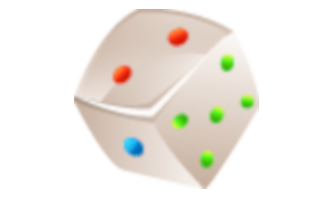Protists and Fungi
Life Science - Middle School
Six Kingdoms of Life
Multimedia Lesson

Protists: Pond Microlife
Multimedia Lesson

Classification
Presentation

Six Kingdoms Overview
Presentation

Protists
Presentation

Fungi
Presentation

What Is a Protist?
Presentation

Plant-Like Protists
Presentation

Euglena
Presentation

Volvox
Presentation

Spirogyra
Presentation

Animal-Like Protists
Presentation

Amoeba
Presentation

Paramecium
Presentation

Fungus-Like Protists
Presentation

Slime Mold
Presentation

Comparing Algae & Protozoa
Virtual Lab

Euglena
Interactive

Volvox
Interactive

Spirogyra
Interactive

Amoeba
Interactive

Paramecium
Interactive

Protists and Fungi
Study Guide

Protists and Fungi
Quiz

Protists and Fungi
Flash Cards

Protists and Fungi
Worksheet

Protists and Fungi
Game

Protists and Fungi
Vocabulary List

Protista
Flip Chart

Fungi
Flip Chart

What is a Protist?
Flip Chart

Plant-like Protists
Flip Chart

Euglena
Flip Chart

Volvox
Flip Chart

Spirogyra
Flip Chart

Animal- like Protists
Flip Chart

Amoeba
Flip Chart

Paramecium
Flip Chart

Fungus- like Protists
Flip Chart

Protists Vocabulary Review
Flip Chart

Study Guide Protists and Fungi
❮
1
/
6
❯
PROTISTS AND FUNGI What Is a Protist? The protist is the most diverse Kingdom of classified organisms on Earth. They range widely in almost every physical characteristic that exists. Protists are combined into the same Kingdom because they are all eukaryotes and they live in a liquid environment. There are protists that are unicellular and multicellular. Three Types of Protists The wide variety of characteristics of the numerous protist species makes it difficult to categorize them, but scientists developed a method that places each species into three separate categories: plant-like, animal-like, and fungus-like. Animal-Like Protists (Protozoans) Animals are all heterotrophs, meaning that they obtain food by eating other organisms. Animals are also able to move around in order to obtain their food. Animal-like protists are categorized for these two characteristics. Animal-like protists are known as protozoans. The big difference between protozoans and animals is that protozoans are unicellular while animals are multicellular. © Copyright NewPath Learning. All Rights Reserved. Permission is granted for the purchaser to print copies for non-commercial educational purposes only. Visit us at www.NewPathLearning.com.
Types of Protozoans: Sarcodine, Ciliate, and Zooflagellate A group of protozoans called the sarcodines move and feed using a pseudopod; an Amoeba is an example of a sarcodine. A pseudopod is a temporary bulge of cytoplasm controlled by the sarcodine’s cell membrane. The term pseudopod means “false foot.” A pseudopod is formed when the cell membrane moves forward in an area and the cytoplasm floods in. The rest of the organism will follow this pseudopod movement. The pseudopod is also used to capture and trap food. Two pseudopods will form around the food and join together trapping the food. The cell membranes of sarcodines in fresh water have a structure in the cytoplasm that collects the excess water, called a contractile vacuole. This prevents the organism from bursting like a water balloon. A second group of protozoans are the ciliates. Ciliates have structures that surround the outside of the cell known as cilia, which are hair-like structures that move in a wave motion. The cilia help the organism sense the environment, move, and feed. A paramecium is an example of a ciliate. They have complex cells with a large and small nucleus. The small nucleus controls reproduction while the large nucleus controls all of the other cell functions. Paramecia normally reproduce asexually using binary fission, but can reproduce sexually using conjugation. The next group of protozoans is the zooflagellates, which use flagella to move. The majority of zooflagellates has between one and eight flagella and lives within a host. The symbiotic relationship between the zooflagellate and the host is normally mutual, but can be parasitic. © Copyright NewPath Learning. All Rights Reserved. Permission is granted for the purchaser to print copies for non-commercial educational purposes only. Visit us at www.NewPathLearning.com.
Plant-Like Protists: Algae Plant-like protists are all autotrophs, meaning that they make their food from light energy from the sun. They are commonly known as algae and are more varied than the animal and fungus-like protists. Scientists credit algae for the majority of the oxygen that is in the air today. They live in both fresh and salt water, are unicellular and multicellular, and vary drastically in size. Some species of algae live in colonies and can carry out a specific function in that colony. The colonies can have up to thousands of single-celled organisms. The multicellular species have specialized cells that perform specific tasks. For example, each species can contain a different type of pigment. Pigments are chemicals that produce different colors of the organism. This allows the color of algae to range from green to red to black. Brown algae are brown because that is the dominant pigment. They also contain other pigments, but they show up much less than the brown. Brown algae is also known as seaweed. Brown algae have many plantlike structures, including: holdfast, blade, and gas bladder. The holdfast anchors the seaweed to a hard, rocky surface. The blade is a leaf-like structure. The gas bladder holds a gas and helps it to float in an upright position. The Giant Kelp species of brown algae can grow as long as 100 meters in length. Euglenoids are freshwater green algae that are unicellular. Euglenoids are unique because under conditions where there is no light, they can be heterotrophic. If sunlight is available they will produce their own food. Euglenoids have something called an eyespot that is located near the flagellum. © Copyright NewPath Learning. All Rights Reserved. Permission is granted for the purchaser to print copies for non-commercial educational purposes only. Visit us at www.NewPathLearning.com.
This eyespot contains pigments that are sensitive to light and will help to guide the euglenoid back to light so that it can produce food. Lesson Topic: What is an eyespot? Diatoms are unicellular organisms that have very interesting shapes. They move by letting ooze out through a slit in its cell wall and sliding along that ooze. Dinoflagellates are unicellular algae that are covered in plates that surround it similar to armor. The only openings in the armor are where the two flagellum come off of the organism. The flagellum movement causes the dinoflagellates to spin like a football through the water. Green algae are algae that contain green pigment. Green algae are unicellular or multicellular. Red algae are almost all multicellular seaweeds. Their red pigment allows them to live deeper in the ocean because they can absorb light at that depth to make food. Fungus-Like Protists Fungi are organisms that have a cell wall, like a plant, and are heterotrophic, like an animal. Most species of fungi use spores to reproduce. © Copyright NewPath Learning. All Rights Reserved. Permission is granted for the purchaser to print copies for non-commercial educational purposes only. Visit us at www.NewPathLearning.com.
A spore is a small cell that has the ability to grow into a new organism. As you may have guessed, these are the characteristics that protists share with fungi. We will learn more about fungi later in the topic. There are three types of fungus-like protists: downy mildews, slime molds, and water molds. Most downy mildews and water molds live in moist environments and grow as thin threads that give it a fuzzy appearance. They generally attack other living organisms and cause them to die. Slime molds live on decaying plant matter and in moist soil. They feed on unicellular or other small organisms by oozing over them and consuming them. They also produce spores to reproduce. What Are Fungi? Fungi drastically vary in size from a multicellular mushroom that you may eat in a salad to the unicellular yeast that produces many dairy products. Almost all fungi share three characteristics: eukaryotic, heterotrophic, and use spores to reproduce. The environment that fungi are most productive is a moist and warm environment. For multicellular fungi, the cells are organized into structures called hyphae. Hyphae Hyphae are threadlike tubes of branching cells that make up the bodies and roots of multicellular fungi. The arrangement of the hyphae is what gives the fungi its body shape. As we already know, fungi are heterotrophic, but they do not eat food the way that animals do. Instead, they absorb food particles through the hyphae. The hyphae will actually grow into the source of food. Once the hyphae grow into the source of food, it will leak out digestive juices onto the food. The juices break the food down so that the hyphae are able to absorb the food particles. Fungi eat both dead organisms and living organisms. © Copyright NewPath Learning. All Rights Reserved. Permission is granted for the purchaser to print copies for non-commercial educational purposes only. Visit us at www.NewPathLearning.com.
Reproduction of Fungi Usually, fungi reproduce by producing spores that can be carried by wind or water to a new location. Spores are produced in a structure called the fruiting body. The majority of fungi can reproduce both asexually and sexually. When the environment is moist and the food supply is good, fungi will tend to reproduce asexually. This allows the fungi to produce thousands of spores within the fruiting bodies to be released into the environment. Unicellular yeast cells reproduce asexually by a process known as budding. Budding is when a yeast cell grows from an existing parent cell. This new cell will break away from the parent cell and function on its own. Sexual reproduction occurs when the environment is not as moist and food is not available. The hyphae of two fungi will join together and exchange their genetic material and form a new organism. Role of fungi in nature Fungi serve many important purposes on Earth. Many species of fungi are decomposers, which help to clean up the environment of breaking the chemicals down of dead organisms into smaller, reusable chemicals. This supplies the soil with nutrients that plants need to be healthy. Some species of fungi have a mutually symbiotic relationship with certain species of plants. The fungi hyphae help the plants to obtain water and nutrients and in return the plants supply the fungi with food that the plant makes. Why are fungi good for humans? A well-known fungus by the name of Penicillium, penicillin, was discovered in 1928 to have the ability to kill bacteria. Since then millions of lives have been saved and scientists have discovered many other disease fighting fungi. Other species of fungi have the ability to cause disease in both plants and animals. Fungi can cause disease in important crops that we eat on a daily basis. If you or someone that you know has Athlete’s Foot, then you or they are affected by a fungal disease. This fungal disease is very contagious and easily treated. © Copyright NewPath Learning. All Rights Reserved. Permission is granted for the purchaser to print copies for non-commercial educational purposes only. Visit us at www.NewPathLearning.com.
Table Of Contents: Six Kingdoms of Life
1. Classification
2.1. Why Do Scientists Classify Organisms?
There are millions of types of organisms that live on Earth. A classification system helps scientists study, record and share information about organisms in a systematic and useful way.
2.2. How Are Organisms Classified?
The science of classification is called taxonomy. Organisms are classified according to shared characteristics such as cell structure, physical appearance, how they obtain food and method of reproduction.
2.3. DNA Technology and Classification
DNA technology is also playing a role in classification. The study of gene sequences and mutations has enabled scientists to understand the evolutionary relationships between different organisms.
2.4. Levels of Classification
There are seven levels of classification—kingdom, phylum, class, order, family, genus and species.
2.5. Scientific Name
Each organism is identified by its scientific name, which includes the genus and species. For example, humans are called Homo sapiens.
2. Six Kingdoms Overview
3.1. What Are the Six Kingdoms?
All organisms are classified into six different kingdoms—archaebacteria, eubacteria, protists, fungi, plants and animals.
3.2. Archaebacteria and Eubacteria
From an evolutionary perspective, archaebacteria and eubacteria are the simplest organisms, having evolved billions of years ago.
3.3. Protists
Protists are more complex organisms with a variety of characteristics. Scientists believe that protists evolved from bacteria.
3.4. Fungi, Plants and Animals
Fungi, plants and animals all evolved from different types of protists.
3. Archaebacteria and Eubacteria
4.1. Characteristics of Bacteria
Bacteria are simple unicellular organisms that can be found in nearly every environment on Earth. All bacteria are prokaryotic—they do not have a true nucleus or organelles with membranes.
4.2. Two Bacterial Groups
DNA studies suggest that there are two distinct groups of bacteria. Therefore bacteria are divided into two kingdoms—archaebacteria and eubacteria.
4.3. Where Are Archaebacteria Found?
Some archaebacteria are found in extreme environments, such as hot springs and salt lakes, while other species live in the ocean and soil.
4.4. Where Are Eubacteria Found?
Eubacteria are more common than archaebacteria and are found in soil, water and our bodies.
4.5. Beneficial and Harmful Bacteria
Archaebacteria and eubacteria are diverse kingdoms of organisms that contribute to oxygen production, food production, decomposition, medical applications and biotechnology. Some bacteria are harmful and cause disease.
4. Protists
5.1. Characteristics of Protists
Protists are eukaryotic organisms that have a true nucleus and membrane-bound organelles. They typically live in or near water and can be unicellular or multicellular.
5.2. Variety of Protists
The protist kingdom includes organisms that are not classified as plants, animals or fungi. Protists are difficult to categorize because there is a wide variation of characteristics among species.
5.3. Protist Groups
Protists are often grouped according to whether they are animal-like, plant-like or fungus-like.
5.4. Protozoa
Animal-like protists are known as protozoa. They are single-celled organisms that move to find food. Amoeba and paramecium are classified as protozoa.
5.5. Algae
Plant-like protists, called algae, contain chloroplasts and make their own food by the process of photosynthesis. They are primarily found in fresh water. Examples include volvox, euglena and spirogyra.
5.6. Fungus-Like Protists
Fungus-like protists are heterotrophs that feed on decomposing matter. They reproduce using spores. Water molds, downy mildew and slime molds are fungus-like protists.
5. Pause and Interact
6.1. Review
Use the whiteboard text tool to complete the activity.
6. Fungi
7.1. Characteristics of Fungi
Fungi are heterotrophic eukaryotes that absorb nutrients from decomposing matter. Most are multicellular, but some, like yeast, are unicellular.
7.2. Parts of a Fungus
The bodies of most fungi are composed of filaments called hyphae. These hyphae grow into a large mass of cells called mycelium.
7.3. Fungus Reproduction
Most fungi reproduce using spores. Fungi are classified into three groups according to their sexual reproductive structures—zygote, sac and club fungi.
7.4. Beneficial Fungi
Many fungi are beneficial organisms, contributing to the recycling of nutrients, food production and medical advances.
7.5. Harmful Fungi
There are some fungi that are harmful and cause disease in animals and plants.
7. Plants
8.1. Plant Characteristics
Plants are multicellular eukaryotes that live primarily on land. They are autotrophic, obtaining energy through photosynthesis.
8.2. Cellulose and Chloroplasts
Plant cells are distinct because they have cell walls composed of cellulose. Chloroplasts inside the cells contain the pigment chlorophyll that is needed for photosynthesis.
8.3. How Are Plants Classified?
Plants are classified according to whether they have vascular systems, produce seeds and develop flowers.
8.4. Nonvascular Plants
Nonvascular plants absorb water and nutrients directly from their surroundings. They are seedless and are considered to be the most ancient land plants. Examples include liverworts, mosses and hornworts.
8.5. Seedless Vascular Plants
Ferns, club mosses and horsetails are seedless vascular plants that reproduce using spores. The vascular tissues, xylem and phloem, carry water and nutrients throughout the plant.
8.6. Gymnosperms
Gymnosperms are vascular plants that produce seeds, but do not have flowers. The seeds of most gymnosperms develop in the scales of cones.
8.7. Angiosperms
Angiosperms are flowering vascular plants that produce seeds inside a fruit.
8. Pause and Interact
9.1. Review
Use the whiteboard tools to complete the activity.
9. Animals
10.1. Animal Characteristics
All organisms in the animal kingdom are multicellular heterotrophs, and their cells lack cell walls. Most animals reproduce sexually, have some type of nervous system and are capable of movement.
10.2. Major Animal Groups
There are over 1.5 million known species of animals. This branching tree shows how major animal groups are possibly related.
10.3. Invertebrates
Invertebrates are animals without backbones. These animals live in water and on land. They account for over 95% of the known animal species.
10.4. Invertebrate Groups
Some of the major groups of invertebrates include sponges, worms, mollusks, echinoderms, cnidarians and arthropods.
10.5. Vertebrates
Vertebrates have a spinal cord encased by protective vertebrae. They also have an endoskeleton that is composed of cartilage or bone. Fish, amphibians, reptiles, birds and mammals are all vertebrates.
10. Pause and Interact
11.1. Kingdom Identification
Drag and drop each organism into the correct kingdom.
11. Vocabulary Review
12.1. Six Kingdoms of Life Vocabulary Matching
All organisms in the animal kingdom are multicellular heterotrophs, and their cells lack cell walls. Most animals reproduce sexually, have some type of nervous system and are capable of movement.
12. Virtual Investigation
13.1. Classifying Organisms
In this virtual investigation you will classify several organisms according to their distinguishing characteristics. Use the information provided and your knowledge of the six kingdoms to help identify each organism.
